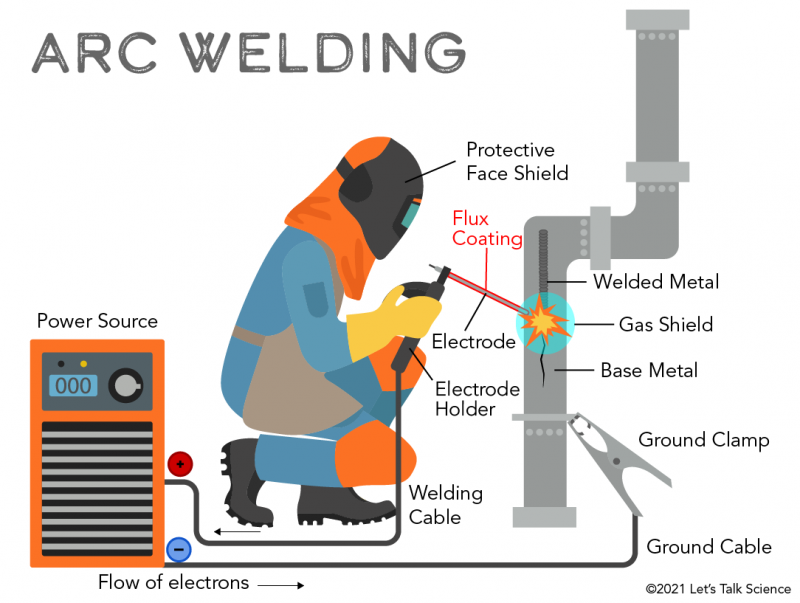Producing a Welding WPS: Step-by-Step Directions for Professionals
Producing a Welding WPS: Step-by-Step Directions for Professionals
Blog Article
Achieving Welding Quality: Introducing the Keys of WPS Execution and Optimization
In the world of welding, attaining excellence is a quest that hinges on the thorough execution and optimization of Welding Procedure Specifications (WPS) By delving right into the key components, methods, difficulties, and ideal techniques connected with WPS, a globe of welding quality awaits those who are ready to discover its depths.
Relevance of WPS in Welding
The Value of Welding Procedure Specifications (WPS) in the welding market can not be overstated, working as the foundation for guaranteeing uniformity, quality, and safety in welding operations. A WPS provides detailed guidelines on how welding is to be performed, including vital variables such as materials, welding processes, joint design, filler metals, interpass and preheat temperatures, welding currents, voltages, travel speeds, and more. By adhering to a distinct WPS, welders can keep harmony in their job, resulting in consistent weld quality across various jobs.

Crucial Element of WPS
Reviewing the integral components of a welding treatment specification (WPS) is vital for understanding its role in welding procedures. One crucial aspect of a WPS is the welding process specification, which details the specific welding processes to be utilized, such as gas tungsten arc welding (GTAW) or protected steel arc welding (SMAW) By integrating these essential components into the WPS, welding treatments can be standard, guaranteeing top quality, efficiency, and safety and security in welding procedures.
Techniques for WPS Optimization

Second of all, training and certification of welding employees according to the specific needs of the WPS is critical. Supplying comprehensive training programs and making certain that welders are certified to implement treatments laid out in the WPS can result in greater quality welds and minimized rework.
Additionally, leveraging technology such as welding software program and monitoring systems can help in maximizing WPS. These devices can assist in monitoring variables, guaranteeing criteria are within specified limits, and offering real-time feedback to welders, enabling them to make prompt adjustments for improved weld top quality.
Common Obstacles and Solutions
Facing obstacles in executing the approaches for WPS optimization can prevent welding operations' effectiveness and high quality. One typical obstacle is inadequate training or understanding of the welding treatment requirements (WPS) amongst the welding group. This can cause incorrect implementation of welds, resulting in flaws and revamp. To address this, thorough training programs need to be executed to guarantee that all welders excel in translating and applying WPS properly.
An additional challenge is the absence of correct documentation and record-keeping, which is essential for WPS optimization. Without clear records of welding criteria, materials made use of, and examination outcomes, it comes to be difficult to recognize areas for renovation and make certain uniformity in welding processes. Applying a durable paperwork system, such as electronic welding monitoring software program, can help improve record-keeping and help with information evaluation for continuous renovation.
Furthermore, irregular welding tools calibration and maintenance can pose a considerable challenge to WPS optimization. Regular devices checks, calibration, and maintenance timetables need to be stuck to strictly to ensure that welding criteria are accurately managed and kept within the defined resistances (welding WPS). By addressing these typical challenges with positive options, welding procedures can enhance effectiveness, high quality, and general welding excellence
Ideal Practices for WPS Application
To make certain successful WPS application in welding procedures, adherence to industry standards and meticulous attention to information are paramount. When launching WPS application, it is important to begin by extensively recognizing the particular welding demands of the project. This requires a detailed review of the welding treatment specs, materials to be welded, and the ecological problems in which the welding will take area.
As soon as the needs are clear, the next step is to choose the proper welding procedure that lines up with these requirements. This entails speaking with the pertinent codes and criteria, such as those provided by the American Welding Society (AWS) or the International Company for Standardization (ISO), to make sure compliance and top quality.
Additionally, recording the entire WPS execution process is necessary for traceability and quality assurance. Detailed documents must be maintained concerning welding criteria, product prep work, preheat and interpass temperature levels, welding consumables made use of, and any kind of discrepancies from the initial procedure. Normal audits site web and testimonials of the WPS can help determine locations for renovation and guarantee recurring optimization of the welding procedure.


Conclusion
In conclusion, the application and optimization of Welding Treatment Requirements (WPS) is important for accomplishing welding excellence. By recognizing the crucial elements of WPS, executing effective techniques for optimization, addressing common difficulties, and complying with finest techniques, welders can ensure top notch welds and safe working problems. It is necessary for specialists in the welding market to focus on the proper implementation of WPS to enhance general welding efficiency and accomplish desired outcomes.
The Relevance of Welding Procedure Requirements (WPS) in the welding industry can not be overemphasized, serving as the foundation for making certain consistency, high quality, and safety and security in welding operations. A WPS gives thorough instructions on just how welding is to be carried out, next including important variables such as products, welding processes, joint design, filler steels, interpass and preheat temperatures, welding currents, voltages, traveling speeds, and much more. One important element of a WPS is the welding process specification, which lays out the specific welding procedures to be made use of, such as gas tungsten arc welding (GTAW) or protected metal arc welding (SMAW) By including these essential elements into the WPS, welding procedures can be standardized, making sure high quality, efficiency, and safety in welding operations.
It is essential for experts in the welding market to focus on my latest blog post the correct execution of WPS to enhance overall welding performance and accomplish desired results.
Report this page